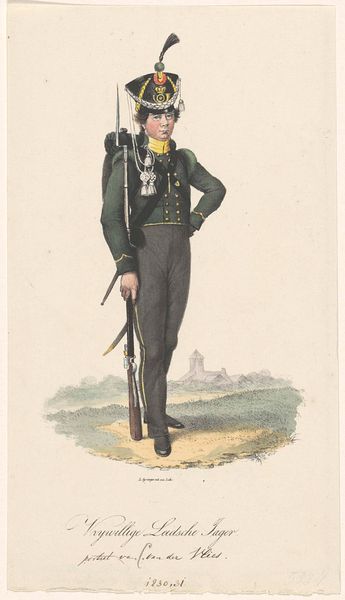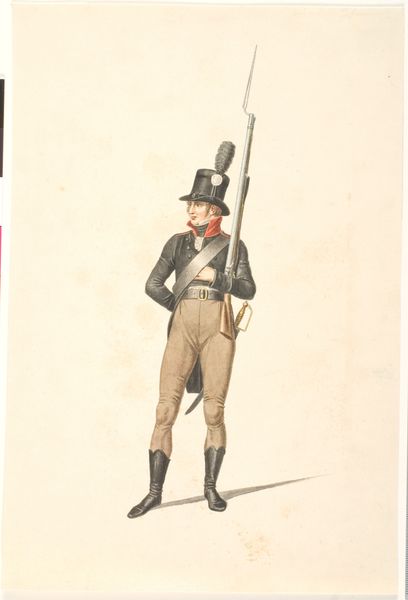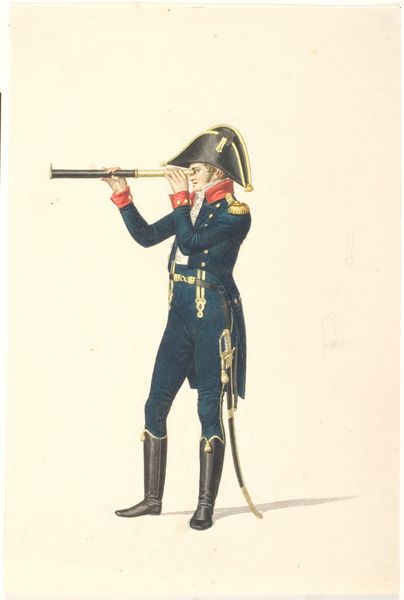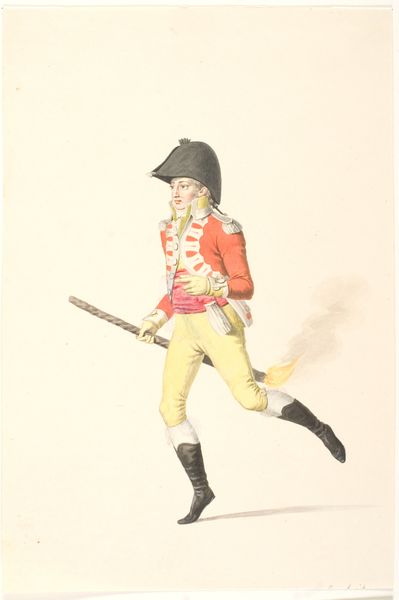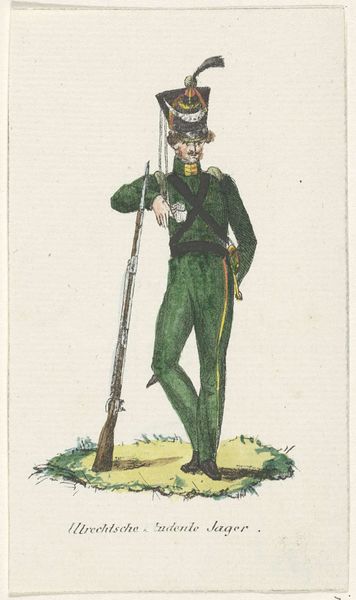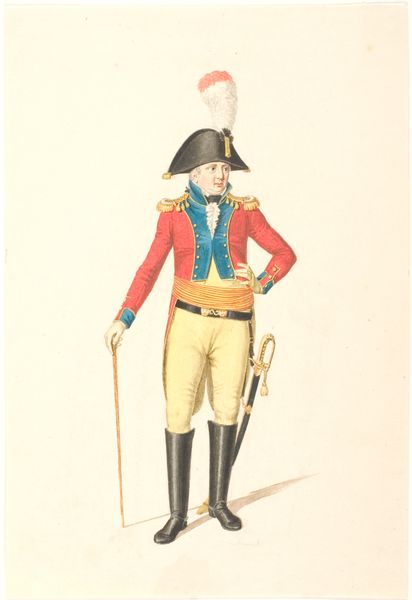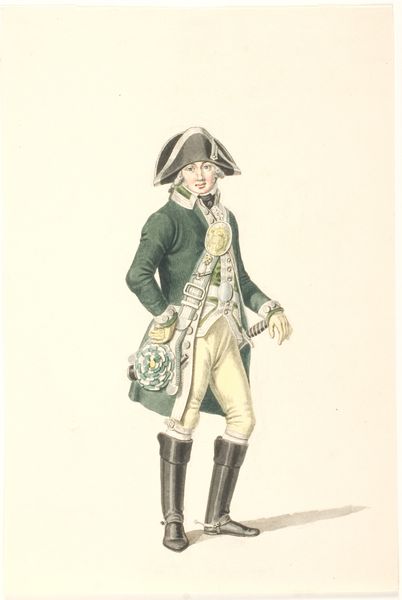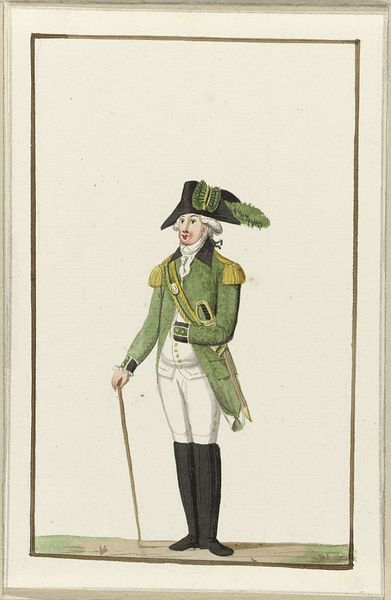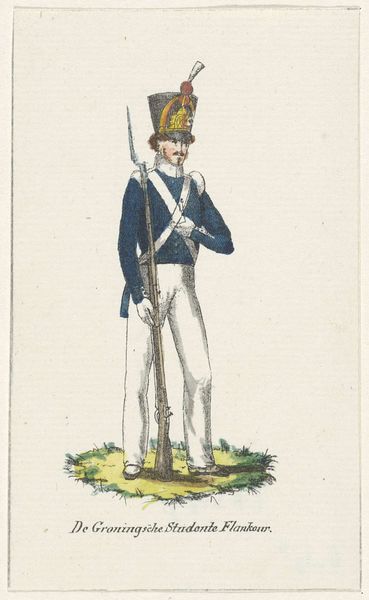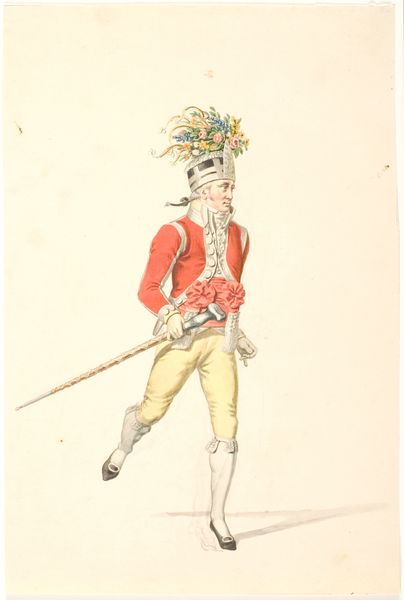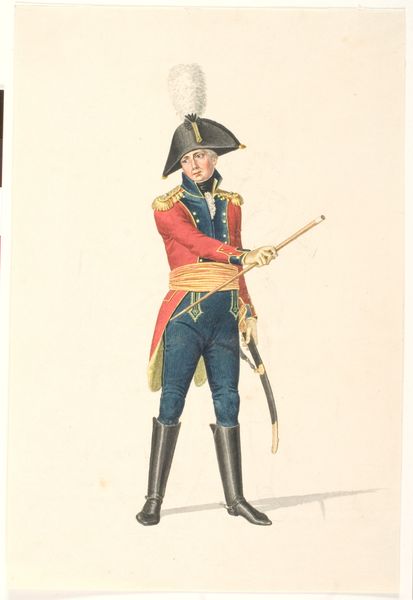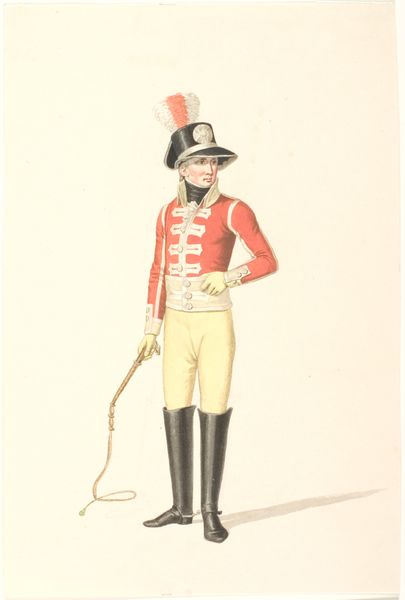
drawing, watercolor
#
portrait
#
drawing
#
watercolor
#
romanticism
#
watercolour illustration
#
genre-painting
#
watercolor
Dimensions: 268 mm (height) x 181 mm (width) (bladmaal)
Editor: This is Johannes Senn's "Kongelig livjæger," created in 1807, using watercolor and drawing. I'm struck by how meticulously the uniform is rendered; you can almost feel the weight of the rifle and the precision of each button. What can you tell us about the context of this artwork? Curator: Well, considering the socio-political climate of 1807, this image serves less as a simple portrait and more as an assertion of power and order. Senn captures the regalness and authority of the royal guard, contributing to the Danish monarchy's strategy of projecting strength. Think about how imagery of soldiers, especially those directly linked to royalty, plays in constructing national identity. What details within the illustration emphasize this power dynamic? Editor: I suppose the upright posture, the direct gaze, and maybe even the puff on the hat add to that image. Is the choice of medium significant here? Curator: Absolutely. Watercolor and drawing, while capable of great detail, were also accessible and relatively reproducible. This suggests a potential dissemination of the image beyond elite circles, reaching a wider audience and shaping popular perceptions of the monarchy and its military might. This Romanticized view certainly hides some difficult facts of Danish rule and society. Does this shift your perspective at all? Editor: It does! I initially saw it as just a well-done illustration, but knowing it's tied to projecting power and shaping national identity changes everything. It’s a fascinating insight into how art can function as a tool of social and political influence. Curator: Exactly. Examining art through its historical and institutional context unveils layers of meaning and intention that might otherwise be overlooked.
Comments
No comments
Be the first to comment and join the conversation on the ultimate creative platform.
